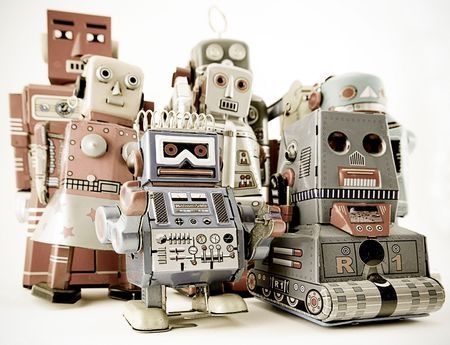An Oxford University study found that nearly half of all U.S. jobs could be done by computers. Even non-routine, white-collar tasks like providing medical diagnoses and doing legal research can now be accomplished with software. Erik Brynjolfsson of MIT believes for the first time ever, technology may be destroying more jobs than are being created. And Microsoft’s Bill Gates asserts that, within two decades, companies will need real incentives to hire humans over more tech-based alternatives; perhaps drastic measures like eliminating income and payroll taxes altogether.
Here’s a quick look at the remarkable ways in which technology may be changing the face of staffing. Will your staff in the future require more system checkups than lunch breaks? You be the judge.
- Largely automated cargo ships may be at sea by the beginning of 2015. Those working on the project—called MUNIN and backed by the European Union and Rolls-Royce—cite human error as the cause of 75 percent of all accidents at sea.
- IBM Watson became famous for winning Jeopardy in 2011. Now the cognitive commuting technology is attempting to replace human brain-power for healthcare analytics, super-smart smart phone apps…and even finding a cure for brain cancer.
- Watson is already being used to replace human customer service interactions at banks including ANZ bank and the Royal Bank of Canada, according to InfoWorld.
- The AP reports that, domestically, “oil companies big and small have used technology to find a bounty of oil and natural gas so large that worries about running out have melted away.” This has helped fuel the staffing boom in oil and gas.
- General Electric is on the verge of using 3D printers to make jet parts, eliminating (among other expenses) a very laborious welding process.
- Most industrial robots are too dangerous for people to work alongside, but “Baxter” by Rethink Robotics moves gently and includes sensors to detect collisions, making him a more holistic staffing addition.
- On the service front, Alpha machine from Momentum Machines cooks up 360 deluxe hamburgers an hour. It can replace a line cook and cashier, with customers ordering, paying and receiving their order all through one system.
- Can technology help keep employees happy? Yes! When Kimberly-Clark implemented SuccessFactors’ digital data solutions for Goal Management, Performance Management and Succession Planning, 90 percent of employees saw an improvement in goal alignment and communication within the company. Sometimes human interaction is better with technology.
- Employees admit to wasting three hours per workday on things like web surfing, socializing, and even applying for jobs elsewhere. Conversely, computers only “waste time” about 14 hours per year due to “digital downtime” for things like network outages.
- Will office assistants be replaced? Executives like Virgin Group mogul Richard Branson don’t think so. He vowed never to replace assistants with no matter how “smart” his phone becomes, in this recent tribute to his executive assistants on LinkedIn.
About 47 percent of U.S. employees are in occupations that are at risk as a result of computerization, according to Brookings Institute economist Gary Burtless. As you can see above technology is also enhancing the way we work by removing barriers to success. What do you see happening: Will technology replace your workers in the future or simply allow you to increase staffing success? We’d love to know you thoughts!
Image credit: davinci / 123RF Stock Photo




